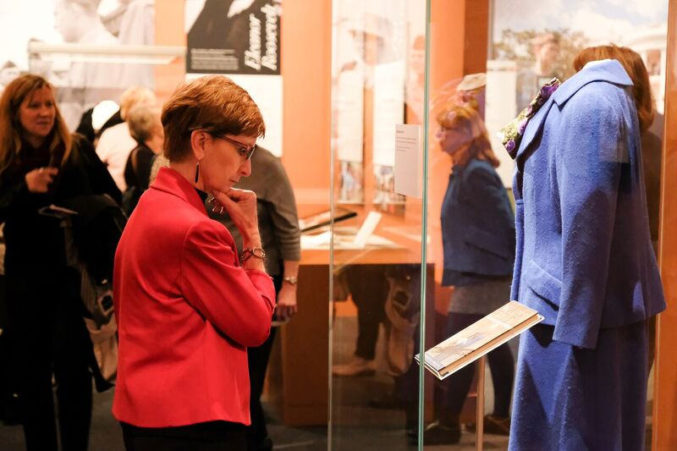Recent reflections on Barbara Bush’s leadership have praised the former First Lady’s kindness, her commitment to her family, and her devotion to causes, such as literacy and civil rights. However, Natalie Gonnella-Platts, Deputy Director of the Women’s Initiative at the George W. Bush Institute, says that a key element of Bush’s legacy is commonly overlooked.
Gonnella-Platts called Bush a champion of “human connectedness, relationships, and the value of personal engagement with others” and noted that she leveraged her ability to relate to people in strategic ways.
In 1989, during the height of the AIDS crisis, Bush made an important visit to Grandma’s House, one of the first shelters for children affected by HIV/AIDS. She made sure photographers captured her holding and playing with the children there, knowing that her outward display of compassion for them would help to take down the stigma associated with the disease.
Gonnella-Platts says, “She very strategically invited the press. She knew that embracing and cradling an infant who was HIV positive would have an impact on challenging the misinformation that persisted at the time about HIV/AIDS.”
Another example of the power of Bush’s empathy and compassion is the friendship she formed with Raisa Gorbachev, wife of Mikhail Gorbachev. Bush looked past Gorbachev’s political beliefs and connected with her on a human level. She even invited Gorbachev to join her in presenting a commencement address at Wellesley College in 1990. Gonnella-Platts says that Bush “leveraged the idea of human connection to build a rapport that was important to U.S.-Soviet relations at the time.”

First Ladies: Style of Influence, an exhibit currently on view at the Bush Center, further explores Barbara Bush’s contributions to society, as well as those of every other acting First Lady, from Martha Washington to Melania Trump. Artifacts connected to the women are used to dig deeper into the significance of the role of First Lady.
Among the artifacts from Barbara Bush that appear in the exhibit is the blue Arnold Scaasi skirt suit that she wore on the cover of the children’s book she wrote, Millie’s Book. Gonnella-Platts, an organizer of the First Ladies: Style of Influence exhibit, says that the suit “not only speaks to her leadership and advocacy on behalf of literacy, but also to the importance of togetherness. … She felt strongly that reading to children created a bond and not only underscored the importance of reading but also allowed families to build connections with one another.”
Gonnella-Platts associates learning about Barbara Bush and her fellow First Ladies through the Bush Center exhibit with celebrating the power of women in general. She says, “I hope that people come away with a deeper understanding of the role of First Lady and the affirmation that these stories matter, women’s stories matter, women in positions of influence matter, and there’s far more to this role than people realize.” The exhibit runs through October 1, 2018.






